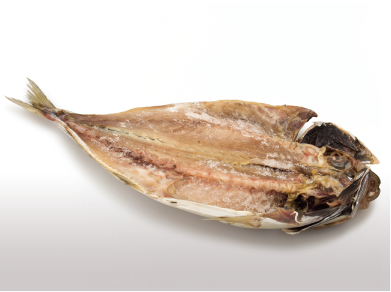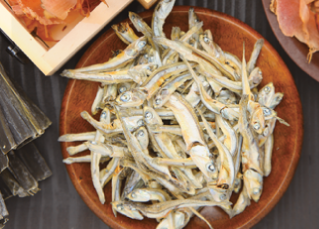
There are many ways to prepare dried fish. The most common method is to salt the fish before drying.
When fishes are seasoned with salt, proteins contained in the food denature (unfold). When the fish is then dried, the proteins trap seasonings inside the fish, resulting in a unique, savory, “umami” flavor. The practice of drying fish in the sun began in early history. People of Nara period (710) used himono as a tribute. By the Edo period, it became widely available and was enjoyed by everyone.
Due to its long shelf life, it gained popularity as a souvenir to take along on Oise-mairi, a pilgrimage to the Ise Shrine.
There are several different types of himono based on the method used. These include dried-salted fish, boiled-dried fish, steam-dried, grill-dried, and mirin-dried. Regardless of the method, the first step is to brine in 10 to 15% salt water. This concentration varies depending on the type of fish and how much fat the fish contains. Bluefish and fish with a high fat content require a longer time in higher salinity brine. PAL-03S is recommended to measure the concentration of the brine solution.
To test fish after bringing, PAL-SALT PROBE is recommended. The probe is directly inserted into the fish for more convenient measurement. PAL-SALT PROBE can be used to monitor fish brined in different concentrations of brine solutions.



